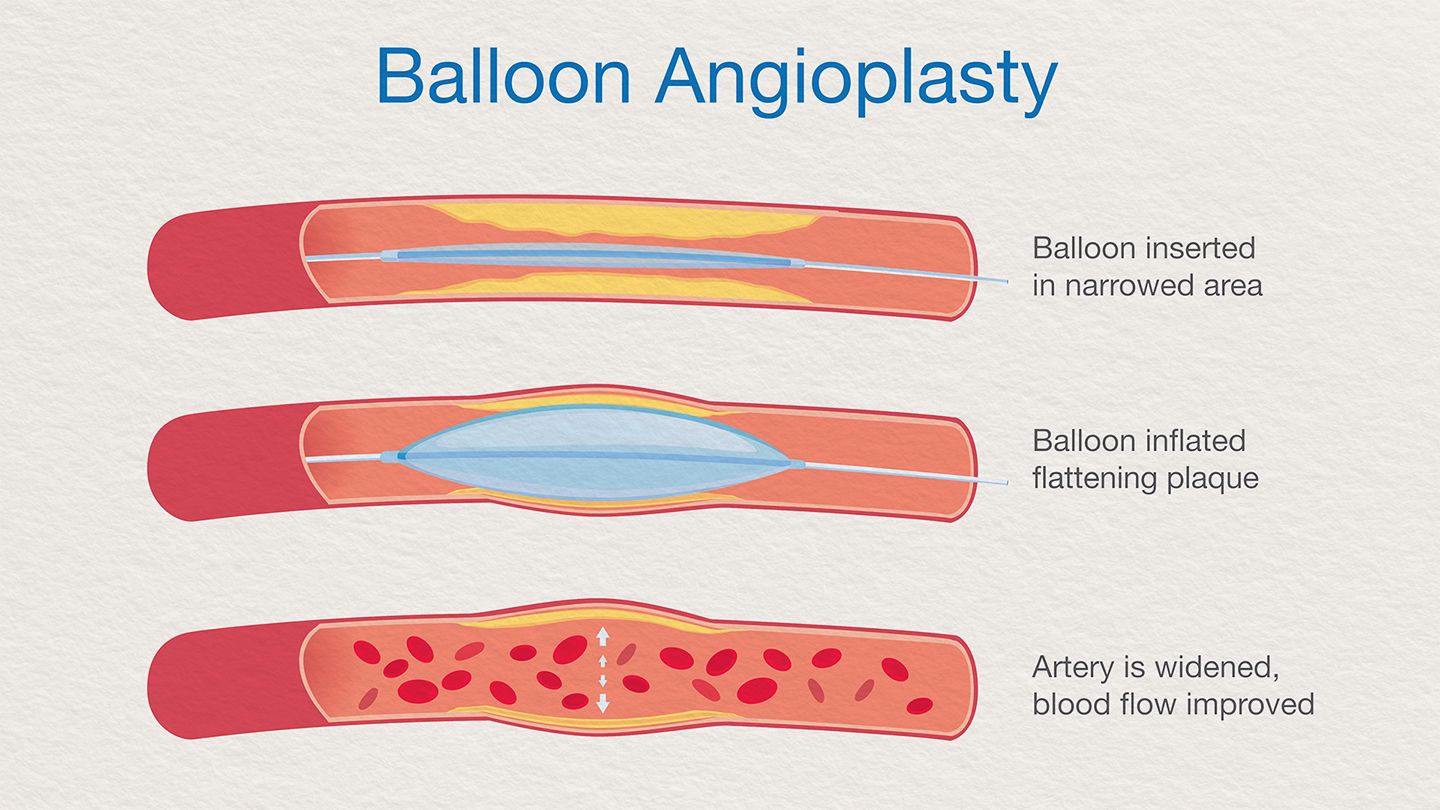
What is angioplasty?
Angioplasty, also called balloon angioplasty, is a procedure that opens arteries to let blood go through more easily. Healthcare providers use this minimally invasive procedure in tight spots in arteries where plaque makes the space inside an artery too narrow or blocks it.The term "angioplasty" means using a balloon to stretch open a narrowed or blocked artery. However, most modern angioplasty procedures also involve inserting a short wire-mesh tube, called a stent, into the artery during the procedure. The stent is left in place permanently to allow blood to flow more freely.
Who needs to have angioplasty?
People who have coronary artery disease or a heart attack may need to have coronary angioplasty. Angioplasty is also used in other parts of the body that have narrow or blocked arteries, such as your neck, arms and legs, kidneys and pelvis. Angioplasty allows more blood to get through an artery that’s too narrow or blocked with plaque. This means the organ that artery reaches will get a better supply of blood after angioplasty.
What are the advantages of angioplasty?
Benefits of angioplasty include:
- It has less risk and a lower cost than a surgical procedure.
- You’ll only have one wound from where the catheters were and a smaller wound from your IV.
- Your provider can put in a stent during your angioplasty if you need it.